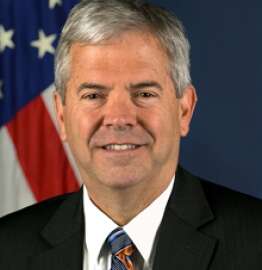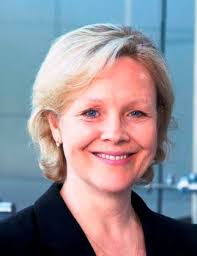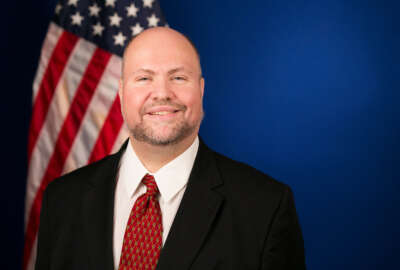
Exclusive
DoT hires new CIO; USPTO Owens resigns
The Transportation Department brings on Vicki Hildebrand from the private sector to run its technology office.
The shuffle of agency chief information officers continues with one in and one out.
In with the new — the Transportation Department is getting a new senior IT executive. A DoT spokeswoman confirmed Vicki Hildebrand is starting today as the CIO.
Out with the old — John Owens, the U.S. Patent and Trademark CIO for almost the last decade, announced to staff he is leaving. His last day is Nov. 3.
“When I came to the USPTO almost 10 years ago I arrived with a deep love and passion for the protection of intellectual property, a long career of leading software development organizations in the private sector and a desire to serve my country,” Owens wrote in an email to staff, which Federal News Radio obtained. “It has been an honor to be part of the USPTO and I have nothing but the greatest respect for the office and its men and women … especially the staff of the OCIO. As a patent grantee I fully understand and appreciate the role intellectual property plays in our great nation’s economy and growth, and that role cannot be achieved without high-quality IT systems and services.”
Hildebrand comes to DoT from the private sector, where she was vice president for customer and partner advocacy at Hewlett-Packard.
According to her LinkedIn page, Hildebrand has been with HP for more than 30 years, working in a variety of positions, including director for IT and senior director for global business services.

She told Columbia University in 2015 that it would be “fun to be a CIO” and said aspiring leaders need more “engineering experience.”
Hildebrand earned her bachelor’s degree in electrical and electronics engineering from the University of Vermont and her master’s degree in technology management from Columbia University.
She replaces Richard McKinney, who left the position in January after serving two-plus years. Hildebrand will pick up several ongoing initiatives that McKinney started.
McKinney, who is now with AECOM as its vice president of enterprise IT strategy, was instrumental in beginning the modernization of the DoT infrastructure, using the cloud and implementing the Federal IT Acquisition Reform Act (FITARA).
As for Owens, it’s unclear what his next steps will be or who will replace him on an acting basis.
Over nearly 10 years, Owens changed PTO’s approach to developing and maintaining technology.
He implemented agile or Dev/Ops processes, and began the effort to modernize key patent and trademark systems.
“Starting in December of 2008, we spent five years building a solid foundation on which to replace the legacy systems with secure, modern, and scalable cloud-based technology. The areas that were not finished were rolled into a Next Generation Roadmap,” Owens wrote to staff. “Together, we then shifted the organization to focus on ‘Delivery of Information and Technology to Enable Innovation’ through Agile software development and a move to a DevOps culture. In those nearly 10 years of hard work we have been able to achieve, in my humble opinion, well above average results.”
Owens said among his office’s accomplishments are:
- Moved 80 percent of systems to a virtual cloud infrastructure;
- Replaced commodity systems with non-customized products (Microsoft Cloud 365);
- Modernized the USPTO website and placed it on a cloud infrastructure;
- Replaced much of Patents and Trademarks infrastructure and Patent examination tools and turned off the legacy applications;
- Replaced and enhanced the Trademark customer experience and stopped printing the Official Trademark Gazette;
- Significantly improved the USPTO’s security posture to the point of immediate and instantaneous monitoring and continuous patching and remediation of vulnerabilities;
- Greatly improved failure rates and greatly reduced response times to fix system malfunctions; in 2008-2009, there were instances of outages of the patents and trademark systems that brought examination to a stop for days, and today disruptions are measured in minutes or hours.
“While we have accomplished much over our time together, I regret that I will not be with you to see our total vision completed. I’m pleased to see that, while it has taken longer than I expected, we’ve accomplished about 70 percent of what we set-out to do. As I mentioned in yesterday’s All-Hands meeting, we have much to be proud about and much still to deliver for our internal customers (USPTO employees) and external customers (applicants and the general public),” Owens wrote. “I leave knowing that OCIO will continue on the path to replacing the legacy systems and providing world class IT systems and infrastructure as a true integrated Dev/Ops team. The OCIO management team is strong and moving in the right direction. Many times over the past 10 years, I’ve referred to the OCIO as a family. I know that some don’t look to their colleagues as family, but I’ve always used that term to express the challenges of interacting and collaborating with a diverse group of loyal and dedicated folks. As I said at the beginning, I am very proud of the federal and contractor staff who call the OCIO their workplace. Collectively, you guys have achieved many great things … and will continue to do so for the years ahead.”
Copyright © 2025 Federal News Network. All rights reserved. This website is not intended for users located within the European Economic Area.
Jason Miller is executive editor of Federal News Network and directs news coverage on the people, policy and programs of the federal government.
Follow @jmillerWFED





